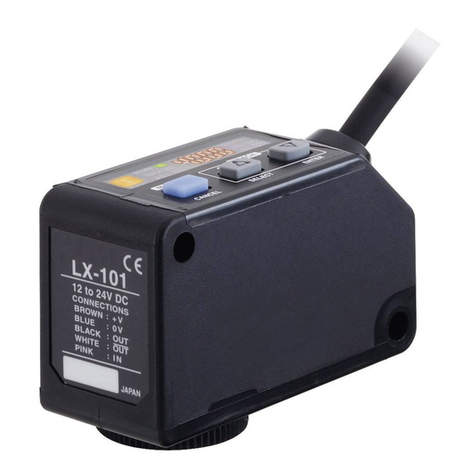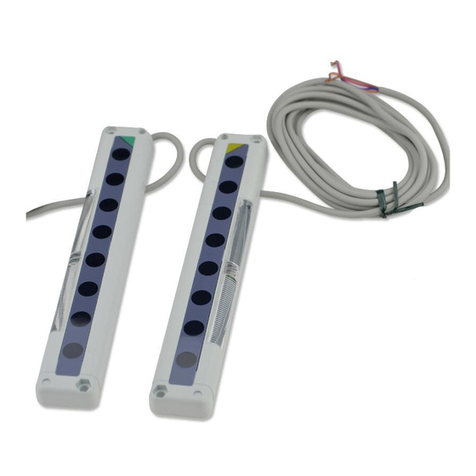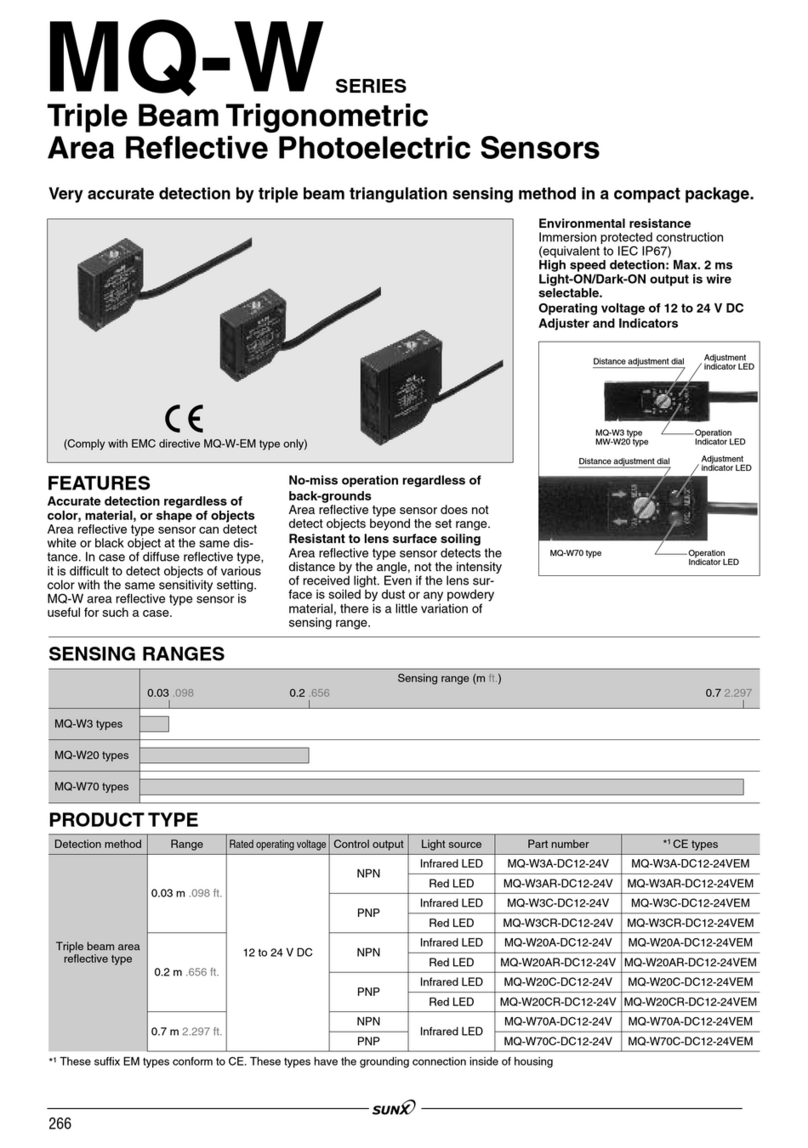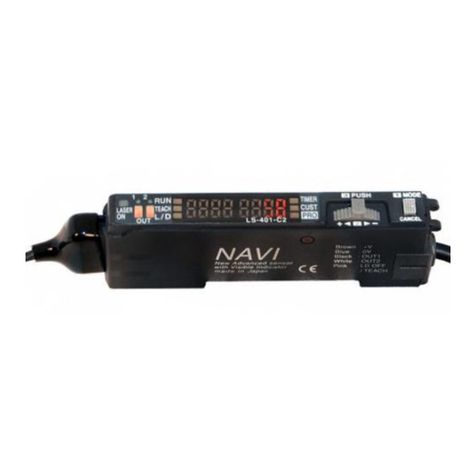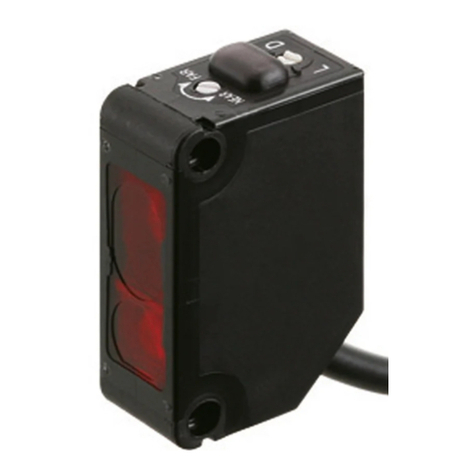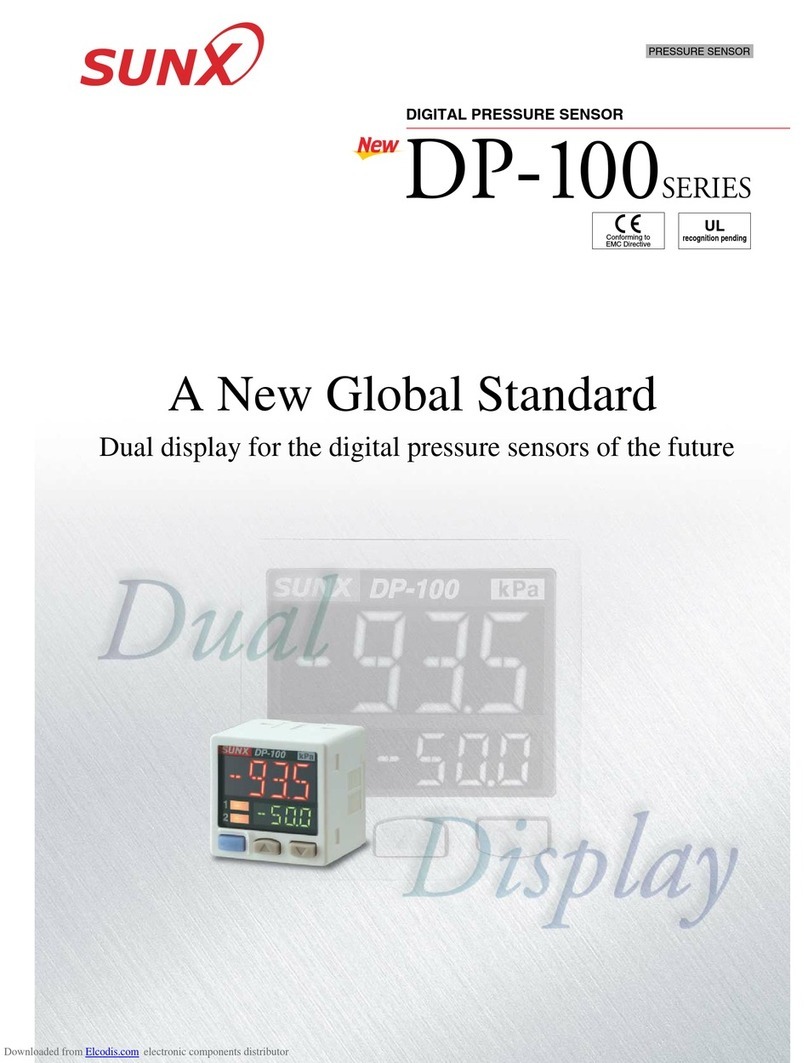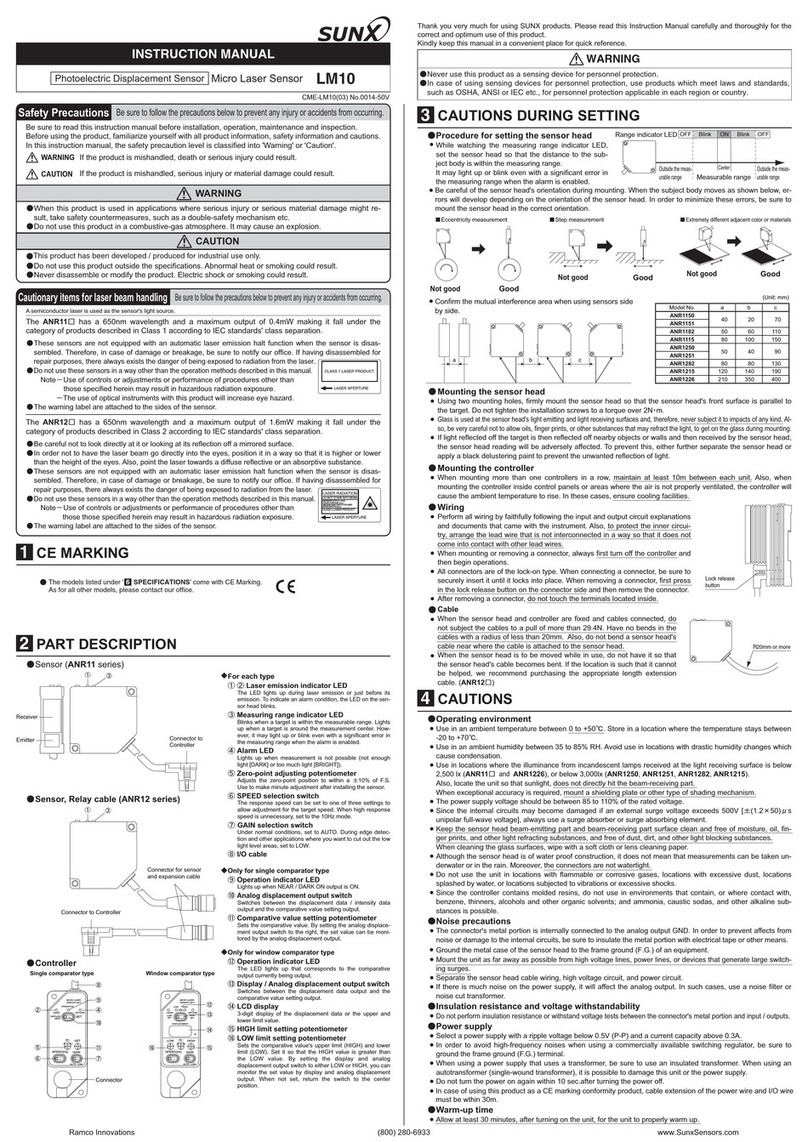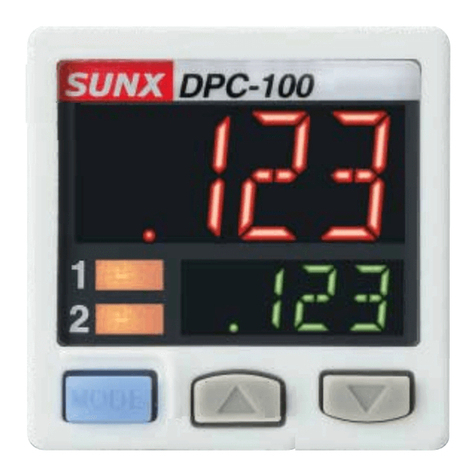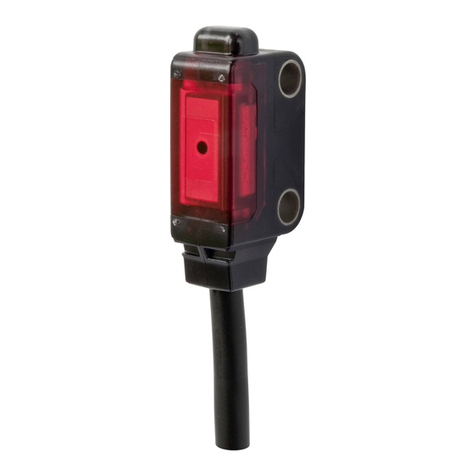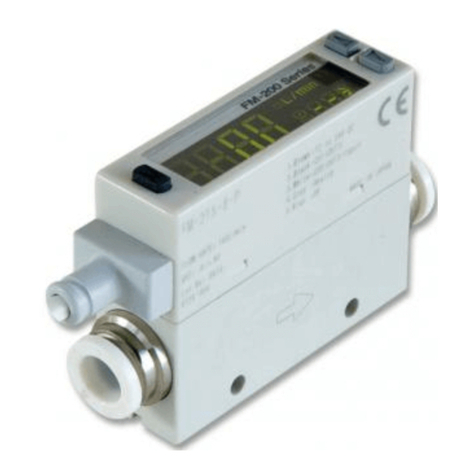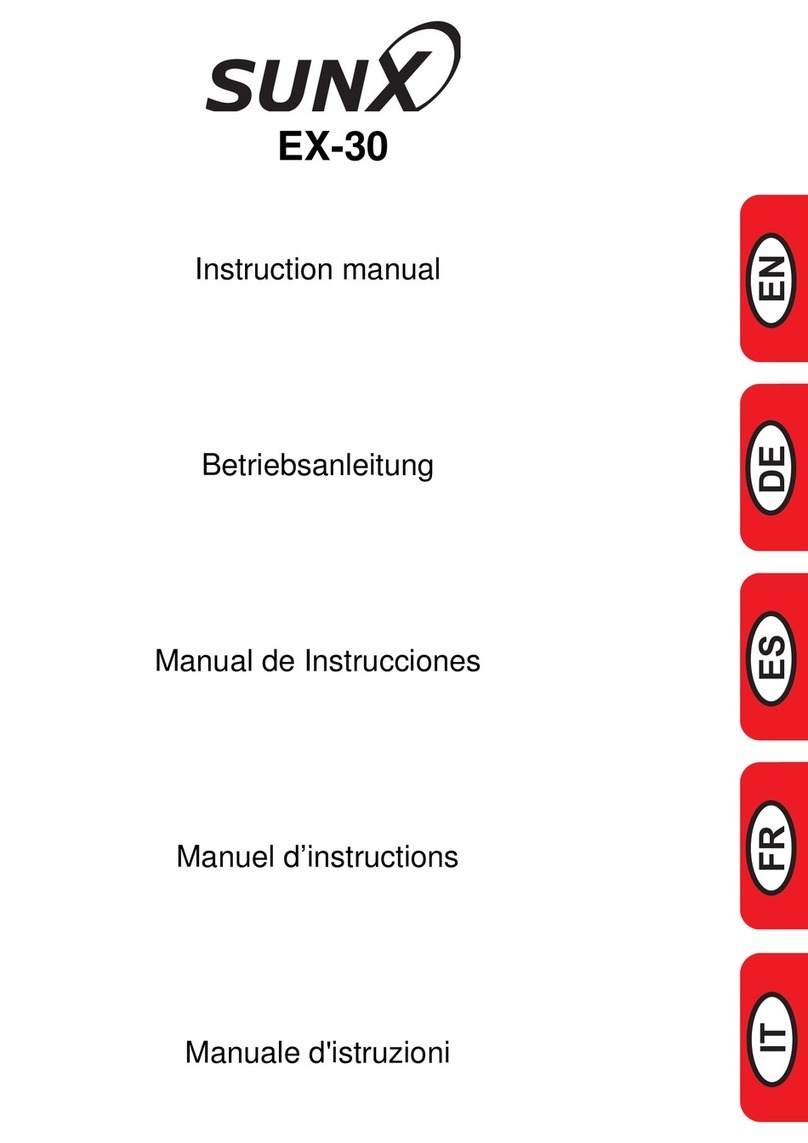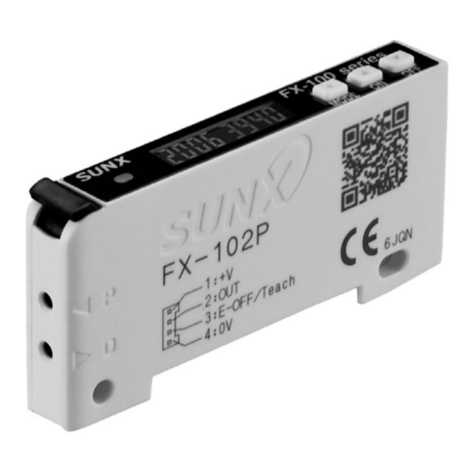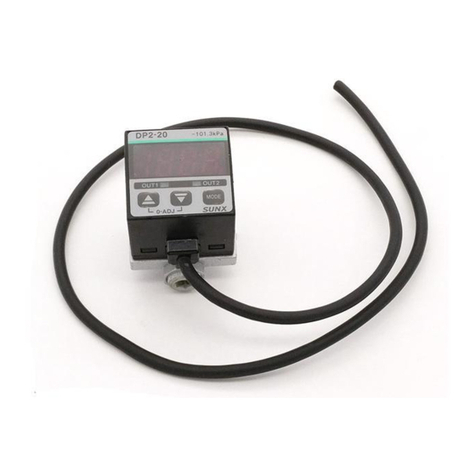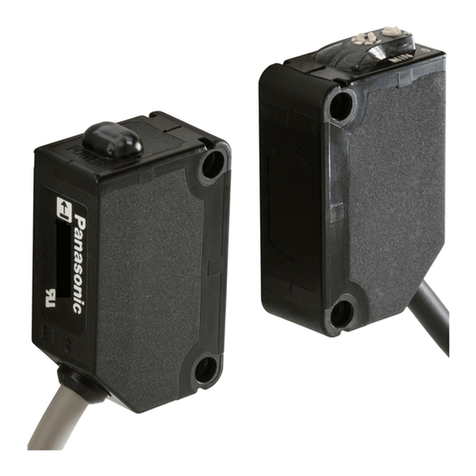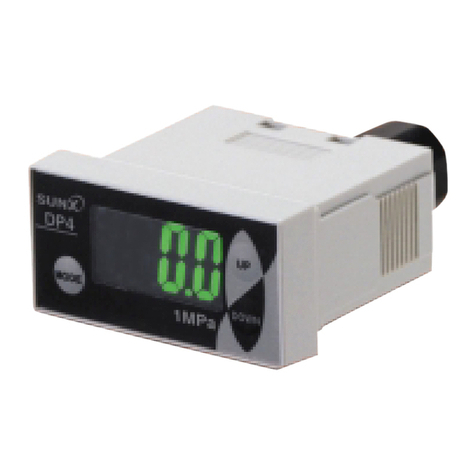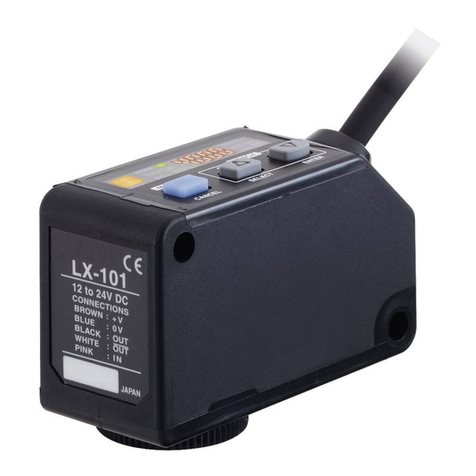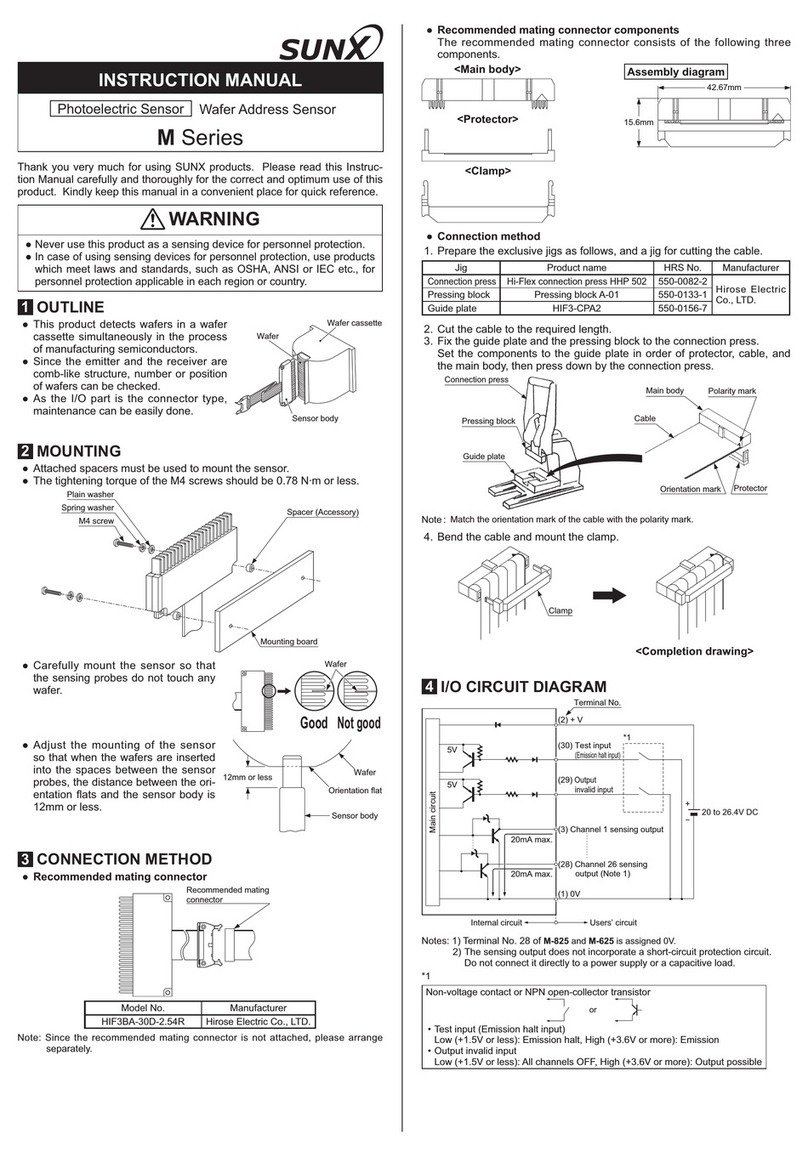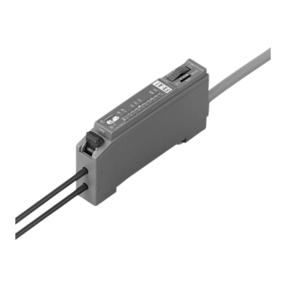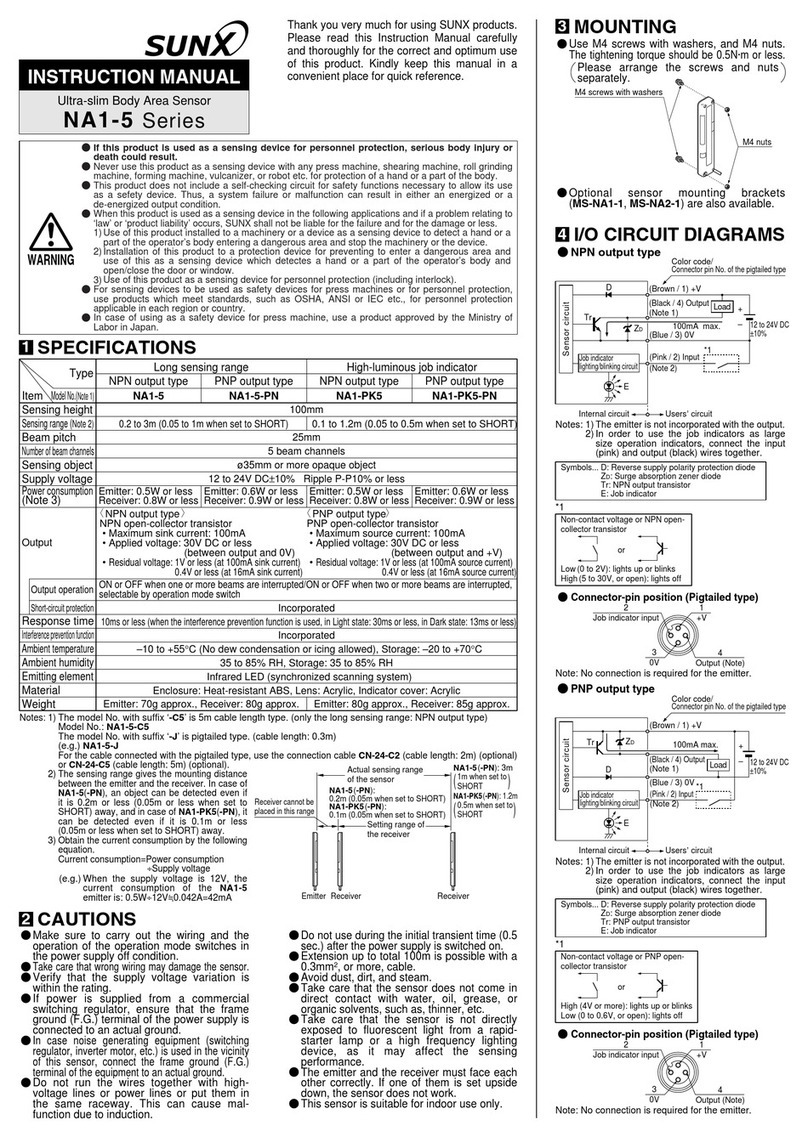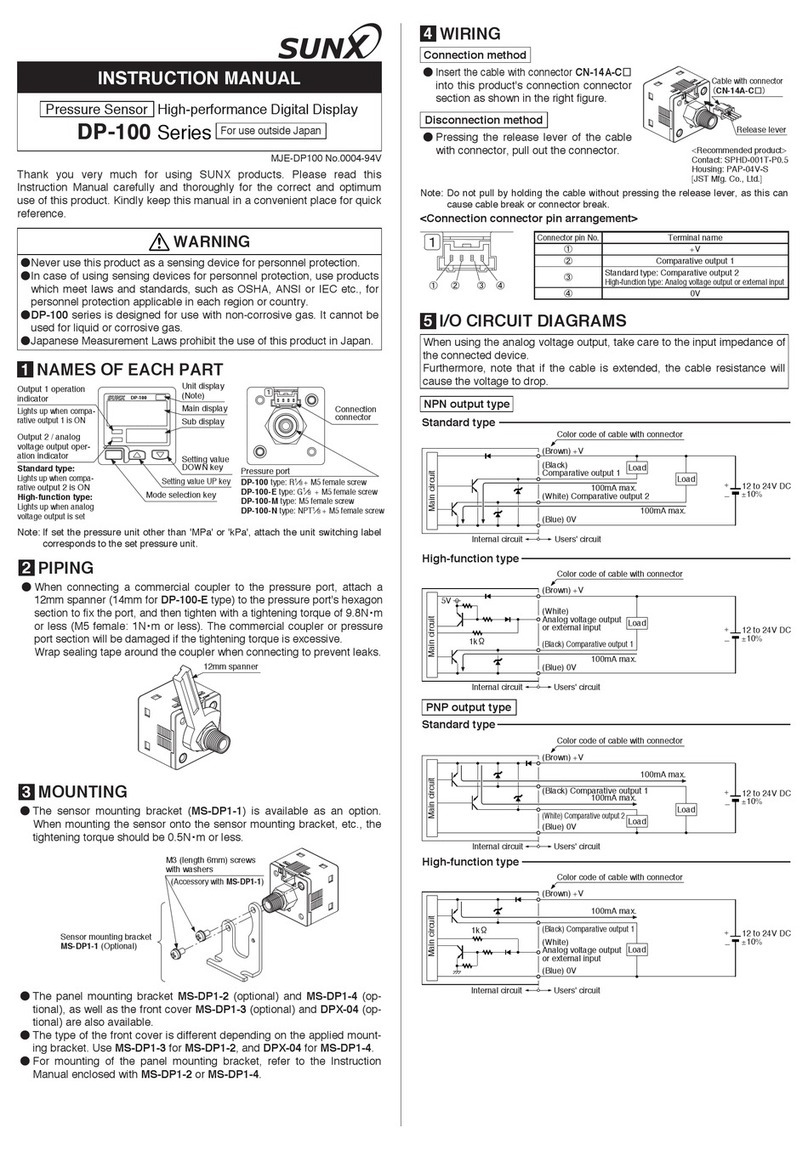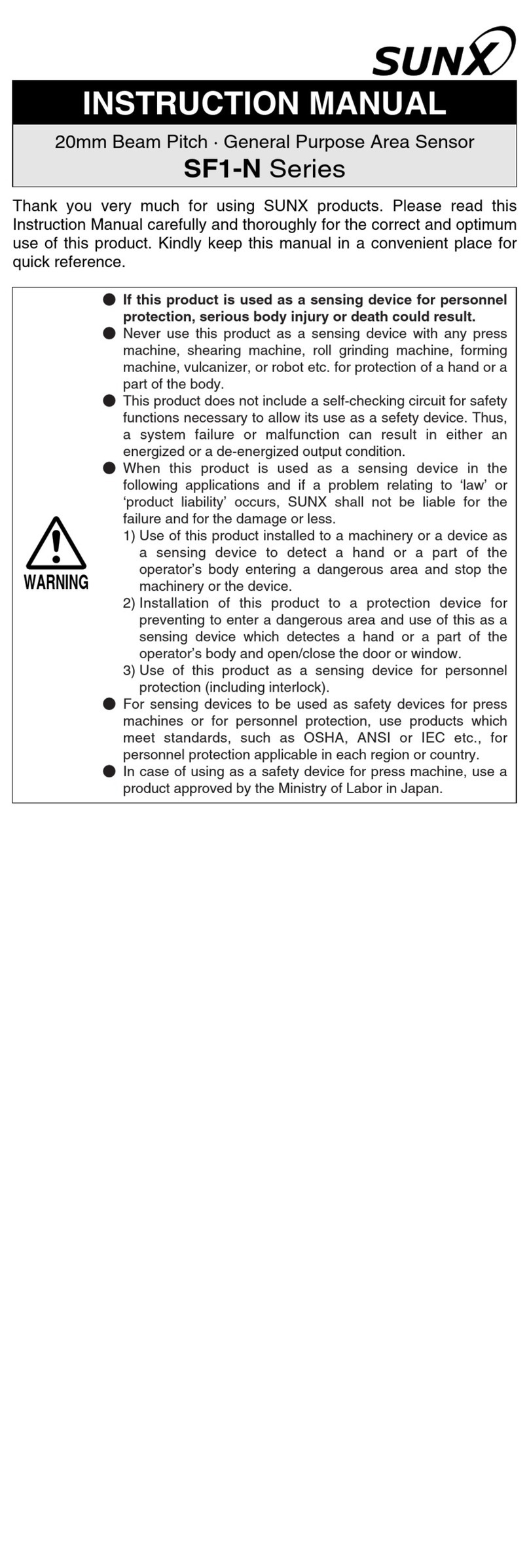Sensing height
Sensing range
Beam pitch
Beam spread angle
Sensing object
Supply voltage
Current consumption
Outputs(OSSD 1, OSSD 2)
(Note 1)
Output operation
Short-circuit protection
Response time
Emitter
Receiver
Test input function
Interference prevention function
Protection
Ambient temperature
Ambient humidity
Ambient illuminance
EMC
Voltage withstandability
Insulation resistance
Vibration resistance
Shock resistance
Emitting element
Material
Cable
Cable extension
Weight
Accessories
220mm 300mm 380mm 460mm 540mm 620mm 700mm 780mm 940mm 1,100mm1,260mm1,420mm1,580mm
0.3 to 10m
20mm
2.5°or less [for sensing range exceeding 3m (conforming to IEC 61496-2)]
"30mm or more opaque object
24V DC15%
200mA or less
<PNP output equivalent type>
Semiconductor output (PNP output equivalent) 2 outputs
•Maximum source current: 300mA
•Applied voltage: same as supply voltage
•Residual voltage: 2.5V or less (at 300mA source current)
ON when all beams are received/OFF when one or more beams are interrupted
(It also turns OFF in case of any abnormality in the sensor or the synchronization signal.)
Incorporated
ONnOFF: 15ms or less, OFFnON: 20ms or less
Emitting indicator: Green LED (lights up under normal emission)
Emission stop indicator: Orange LED (lights up when emission stops)
Fault indicator: Yellow LED (lights up or blinks if the sensor fails)
OSSD ON indicator: Green LED (lights up when OSSDs are ON)
OSSD OFF indicator: Red LED (lights up when OSSDs are OFF)
Incident beam indicator: Green/Red LED [lights up in red with intensity proportional to the incident light intensity for reference
channel (second channel from cable side), lights up in green when all beams are received]
Fault indicator: Yellow LED (lights up or blinks if the sensor fails)
Incorporated
Series connection: 4 sets max., however total 192 beam channels max.
Incorporated Parallel connection: 4 sets max., however total 192 beam channels max.
Series and parallel mixed connection: 12 sets max., however total 192 beam channels max.
IP65 (IEC)
10 to55°C (No dew condensation or icing allowed), Storage:25 to70°C
30 to 85% RH, Storage: 30 to 95% RH
Sunlight: 20,000?x at the light-receiving face, Incandescent light: 3,500?x at the light-receiving face
Emission: EN50081-2, Immunity: EN50082-2 and IEC 61496-1
1,000V AC for one min. between all supply terminals connected together and enclosure
20MΩ, or more, with 500V DC megger between all supply terminals connected together and enclosure
10 to 55Hz frequency, 0.75mm amplitude in X, Y and Z directions for two hours each
300m/s2acceleration (30G approx.) in X, Y and Z directions for three times each
Infrared LED (Emission wavelength: 870nm)
Enclosure: Aluminum, Cap: ABS
8-core (0.3mm24-core, 0.2mm24-core) shielded cable, 0.5m long, with a connector at the end
mUse together with the optional mating cable
Extension up to total 27m is possible, for both emitter and receiver, with optional mating cables.
1.1kg approx. 1.3kg approx. 1.5kg approx. 1.7klg approx. 1.9kg approx. 2.2kg approx. 2.4kg approx. 2.6kg approx. 3.1kg approx. 3.5kg approx. 4.0kg approx. 4.4kg approx. 4.9kg approx.
MS-SF2-1 (Sensor mounting bracket): 1 set, MS-SF2-2 (Intermediate supporting bracket): (Note 2), SF2-EH-TR (Test rod): 1 No.
12 16 20 24 28 32 36 40 48 56 64 72 80
SF2-EH12 SF2-EH16 SF2-EH20 SF2-EH24 SF2-EH28 SF2-EH32 SF2-EH36 SF2-EH40 SF2-EH48 SF2-EH56 SF2-EH64 SF2-EH72 SF2-EH80
SF2-EH12-N SF2-EH16-N SF2-EH20-N SF2-EH24-N SF2-EH28-N SF2-EH32-N SF2-EH36-N SF2-EH40-N SF2-EH48-N SF2-EH56-N SF2-EH64-N SF2-EH72-N SF2-EH80-N
SF2-EH
5
SPECIFICATIONS
Notes: 1) OSSD stands for ‘Output Signal Switching Device’.
Notes: 2) MS-SF2-2 (intermediate supporting bracket) is attached with sensors having 24, or more, beam channels.
The number of attached intermediate supporting brackets is different depending on the sensor as follows.
SF2-EH24(-N), SF2-EH28(-N), SF2-EH32(-N), SF2-EH36(-N), SF2-EH40(-N), SF2-EH48(-N), SF2-EH56(-N): 1 set
SF2-EH64(-N), SF2-EH72(-N), SF2-EH80(-N): 2 sets
Model
No.
Item
PNP output equivalent type
NPN output equivalent type
<NPN output equivalent type>
Semiconductor output (NPN output equivalent) 2 outputs
•Maximum sink current: 300mA
•Applied voltage: same as supply voltage
•Residual voltage: 2V or less (at 300mA sink current)
Indicators
Environmental resistance
Number of beam
channels
( )
